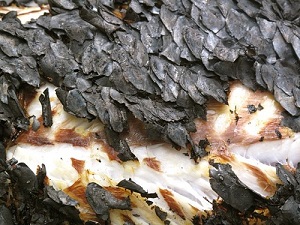Taia's Razor
It's important to keep the affected area in good condition. Ignoring the disease, whilst appealing to some, may lead to a rapid spread of the condition and a significant worsening of ones quality of life, even to the point where independent living is impossible.
Transmission & Vectors
Causes
Symptoms
- Discoloration of the scales, as they rapidly decay as a Vesk's would normally do so just before their yearly shedding.
- Rapid shedding of the scales, leading to patches of the Vesk's leathery hide being exposed to the open air and drying up.
- Peeling of scales along the face, and the hide of the Vesk being stretched taut over their body as it dries up.
- Joint swelling, stiffness, or pain
- Without treatment and regular upkeep, profuse bleeding from cracked skin and permanent disfigurement.
- Symptoms are often worse when it's cold and dry and improve in warm, humid conditions – this means they may be more noticeable in the winter than the summer
Treatment
Individuals suffering from Taia's Razor require specialised body care with significantly gentler utensils than the typical Vesk would utilise. Metallic wire brushes are replaced with flax, the standard metallic files become gentle creams and steam treatments. Majority of treatments are relatively easy to obtain; whether made at home or purchased from pharmacies. One of the biggest issues when managing Taia's Razor is the amount of time required to keep the disease manageable. Applying emollients is required after every shower in order to trap moisture, together with frequent deep moisturising treatments that can be done at home, but are most effectively done by a dermatologist.
Antibiotics and antiseptics are a common prescription for infections and ulcers which are a common concurrent issues that go along with Taia's Razor. Experimental treatments such as removing the affected area of skin at infancy have proved unsuccessful, as have steroid treatments.




Comments